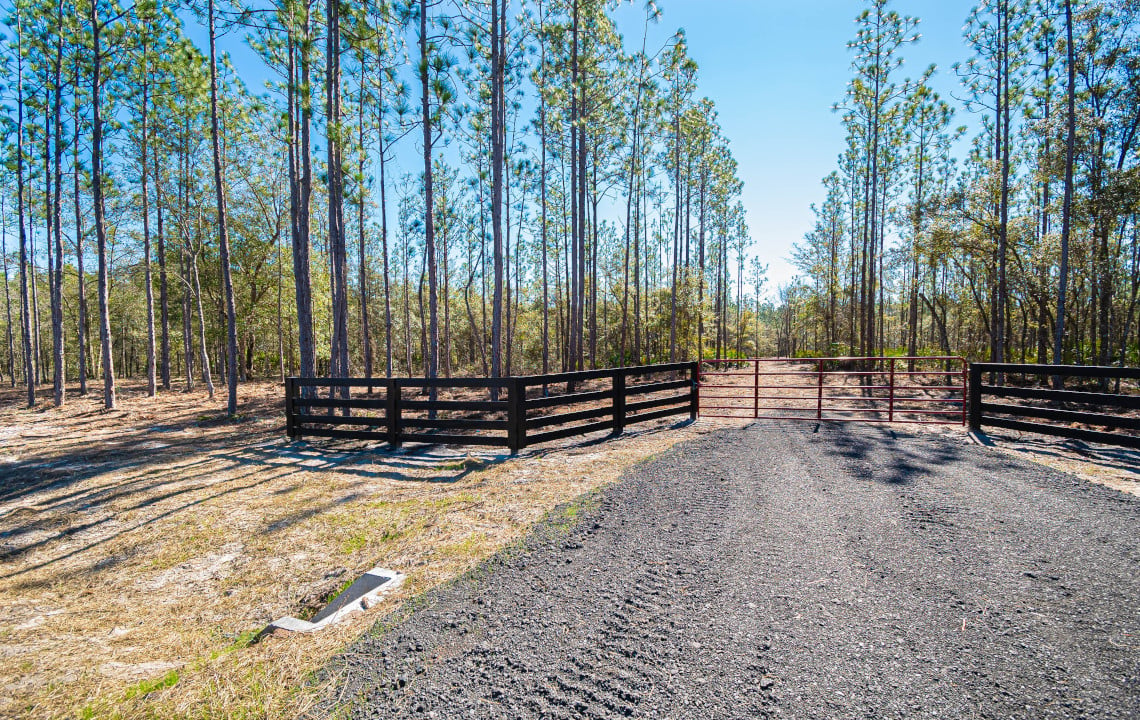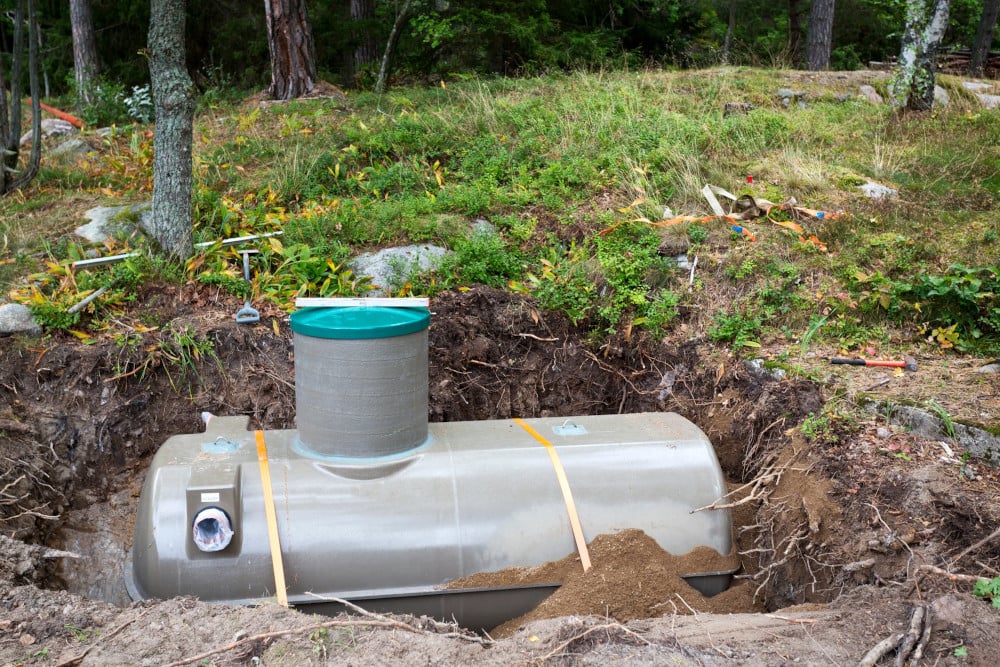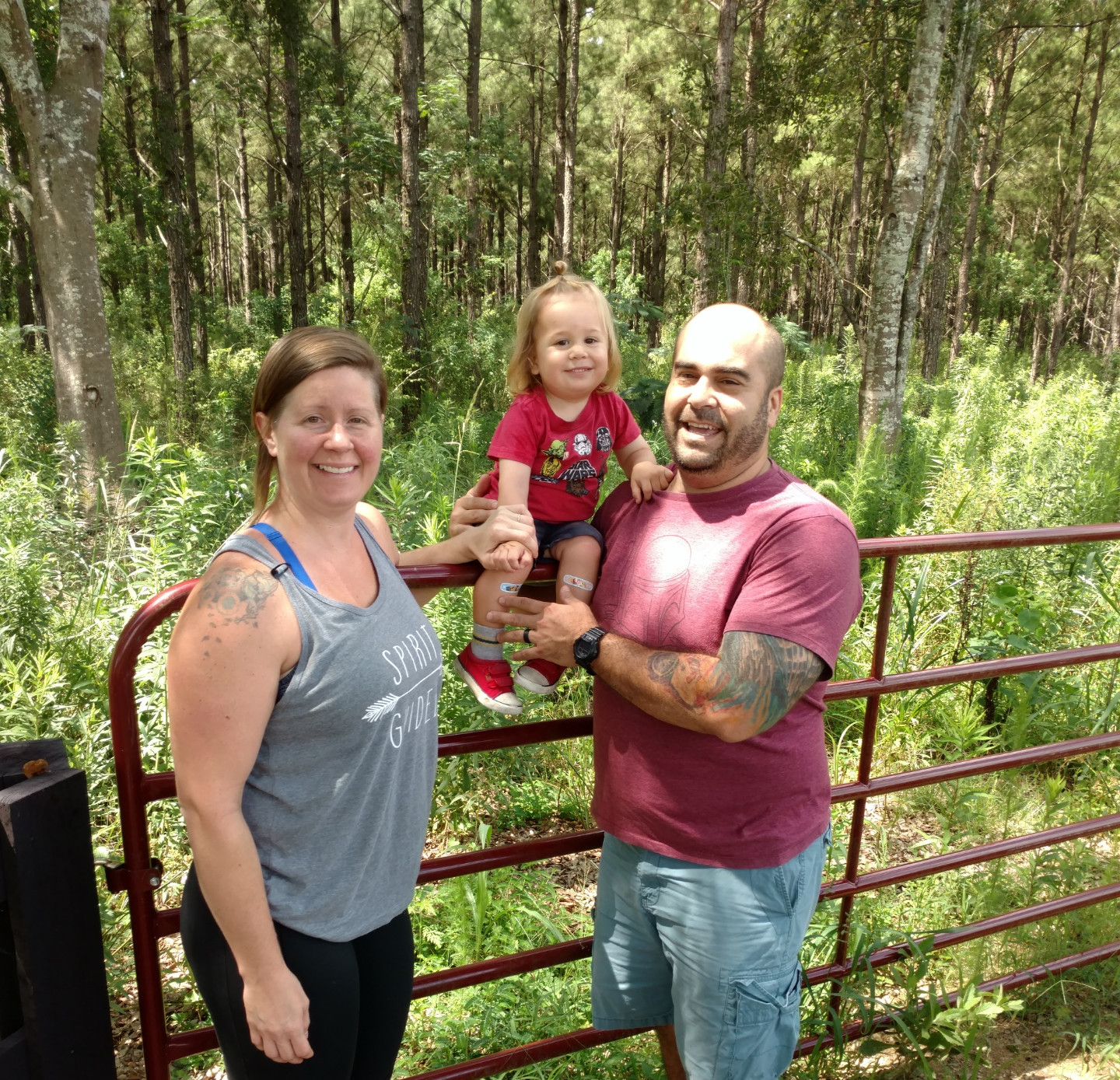When you're building a rural homefor the first time, installing a septic system may be new to you. We asked Nassau County, Florida, septic contractors to explain the steps involved.
When you live on country land in North Florida, you're often required to have a septic system installed.
While more densely populated areas may have access to public sewer services, rural area ares too far out for municipal services, requiring each individual homeowner to have their own septic system. In fact, 30% of Florida’s population relies on septic systems, according to the Florida Department of Health.
Often referred to in Florida's official state documents as an onsite sewage and disposal system, a septic system handles waste for an individual property and is housed on the property. A septic system must be installed following state guidelines to ensure the system doesn’t contaminate the ground and water supply.
Some key minimum septic tank installation requirements to keep in mind:
- 75 feet from any wells or open water sources
- 5 feet from your house
- 5 feet from your property line
If a neighbor nearby has an existing septic system, you may additionally be required to install it close to the neighbor’s system.
Here are the steps to install a septic system in Nassau County. The steps should be similar in surrounding North Florida counties:
Step 1: Get a site evaluation
Before you can apply for a septic permit, you need to know the topography, water table level, soil type and soil percolation of your land. This information, provided in a site evaluation, will help determine what type of septic system the land will need to ensure nearby groundwater isn’t contaminated.
“The soil test will tell you the level of the water table during the wet season,” explains Ken Murray, owner of Murray Septic Tank. “The bottom of the drain field has to be at least 24 inches above the wet season water table.”
Site evaluations are most often performed by the Nassau County Department of Health, which includes the evaluation in the overall fee for a septic permit (see details in Step 2). You can also hire a licensed site evaluator, a septic tank contractor or an engineer with soils training to do the site evaluation.
Tip: Don’t ask a septic contractor for a bid until your site evaluation is complete, recommends Robert Blocker, owner of Blocker’s Septic and Plumbing in Yulee. Price varies steeply depending on what type of system the evaluation determines you will need.
Once you do have your site evaluation, talk to several contractors and compare prices and services before deciding who to hire.
Murray, who has been installing septic systems for 34 years, recommends looking for someone who is licensed, experienced and will be on the job site, himself, rather than sending less experienced employees.
“Ask the local contractors who they recommend, or talk to the health department,” he says. “They can’t legally recommend a certain company, but they can answer you if you ask if they had any problems with someone.”
Step 2: Get a septic permit from Nassau County Department of Health
The county Department of Health’s Environmental Health section is the resource to answer your questions, provide guidelines and approve permits for septic systems in Nassau County. Permitting forms are available on their website. Go to this link on the county health department website and click Septic Tank and Well Permit Forms. When you apply for a permit, you’ll need to submit Application for Construction form DH4015, which requires:
- A site plan drawn to scale (your home or septic contractor can assist with this)
- A building floor plan
- A site evaluation completed by a professional
The size and type of tank you need will depend on several factors, including the number of bedrooms in your home, the type of soil you have and the overall square footage of the home.
Blocker said a typical 2200 square foot, three-bedroom home with “good soil” would require a 900-gallon tank with a 375 square foot drain field.
Once issued, your septic permit is valid for 18 months.
The fee for a new construction permit package was $520 at the time this was published. That fee includes the application, site evaluation by the county health department, the septic permit, a research surcharge and the initial first inspection. There is an additional fee for reinspection if the system doesn’t meet minimum state standards in the first inspection, or if the site requires excavation and the corresponding additional inspections that go with it.
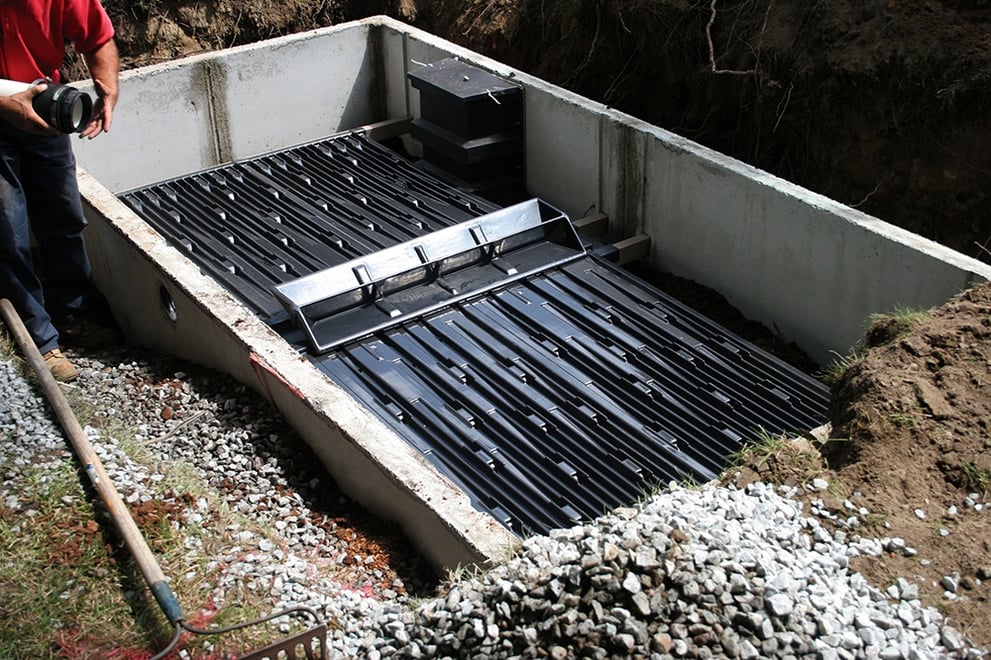
Contractors in Nassau County often use a concrete septic tank like the one shown above.
Step 3: Have the septic system installed
Once your septic permit is approved, it’s time to have the septic system installed. Blocker recommends you wait until the bulk of construction on your home is complete to ensure construction vehicles don’t drive over your septic system.
The first step for your contractor is to visit the property and determine what will fit in the space set aside for your tank. (Sometimes there is only one realistic location for a tank. On larger properties, you may be able to choose a location, assuming it meets all state requirements).
On smaller properties, the contractor may not be able to use its larger trucks to install your tank, limiting what type of tank it can install, explains Jim Seagraves, general manager of Blocker’s Septic and Plumbing.
“Basically everybody goes with a concrete tank because it lasts longer - that’s the ideal. If we couldn’t get a boom truck onto the property, the other options are polybutylene or fiberglass tanks,” Seagraves explained.
While some properties will require just one tank without a pump, others will need a dosed system which has an additional tank with a pump.
The time - and the cost - of the project will vary depending on the quality of the soil and the size and type of tank the Department of Health determines you need. Higher, drier properties will be quicker and less costly. Low-lying, wet properties may require an excavation and/or a mound (in which the septic tank is above ground level) to ensure the tank is above the water table.
Murray said sites that require a mound can be built different ways to make the mound more discreet. There may be a place where it will be hidden behind landscaping, or - in Murray’s preferred method - the house can be built at the same level as the mound.
“It costs a little more to put the house up higher, but then the septic can go right next to the house,” so the dirt will naturally taper in the yard rather than having a visible mound.
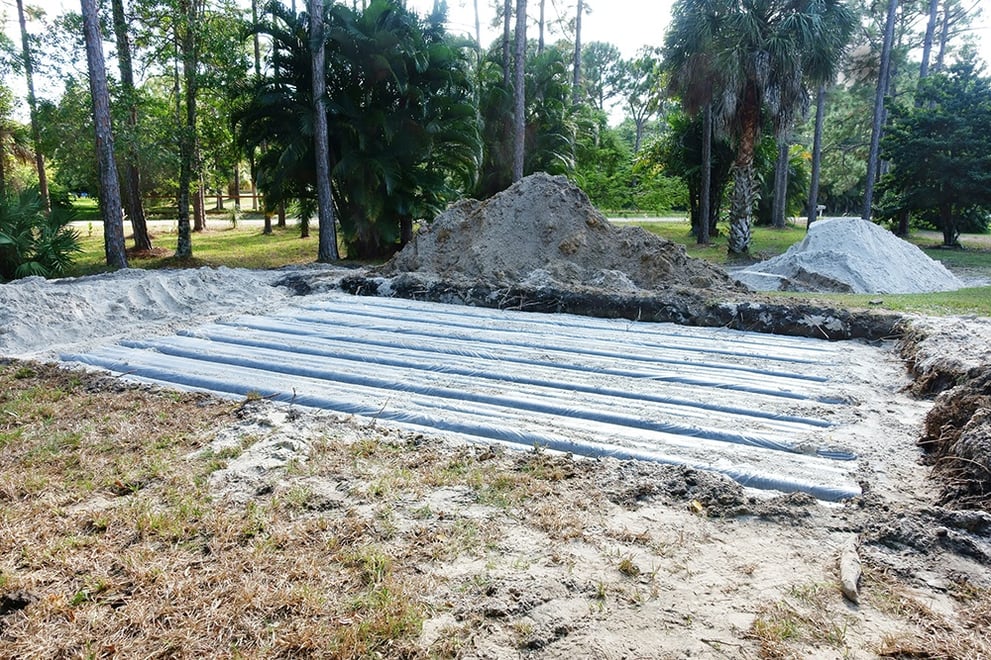
A typical 2200 square foot, three-bedroom home with “good soil” in Nassau County would require a 900-gallon tank with a 375 square foot drain field.
Once you hire your septic contractor, installation should take three to seven days, depending on how complex the project is.
Your contractor should take great care to ensure the depth of the tank matches the Department of Health’s requirements exactly. Before the system can be buried and placed into service, it has to be inspected by the county health department to ensure it meets all requirements. There may be multiple inspections - and multiple inspection fees - if an excavation is required.
Note: If you are also putting a well on the property, the final inspection of the septic system will not be approved until the well has been installed.
Once your septic tank is installed and put into operation, keep in mind that it should be pumped on a rotation to prolong the life of the tank and ensure there aren’t any contamination issues. Aim for once every five years in a one- or two-person home, or once every three years in a family home.
Want to learn even more about Florida’s standards for septic systems? They’re explained in section 64 E-6 of the Florida Administrative Code. View it here.
Additional Tips about Getting a Septic System Installed:
- Get a warranty in writing from your septic contractor in advance of construction.
- If you're wondering what type of septic system your property will need, find out what your nearest neighbors have, and that will give you a good idea of what you’ll probably need.
- If you have to have your septic tank site excavated, you can opt to keep the excess soil on your property for another use rather than having it hauled away.
Florida Department of Health in Nassau County Environmental Health
- Call 904-530-6800
- Website: http://nassau.floridahealth.gov/programs-and-services/environmental-health
- Email chd45webmaster@flhealth.gov
- Fax 904-277-7278
- Address: 96135 Nassau Place, Suite B, Yulee, FL 32097
---
Nassau County Septic Tank Contractors
The Florida Department of Health maintains a list of licensed septic tank contractors for every county. Use this link to search their database. Here are the Nassau County contractors the website listed at the time we published this article:
Advanced Utilities and Septic Inc.
904-335-1814
904-225-5265 or 904-759-9355
Crazy Ted’s Home Improvement & Mobile Home Repair Inc.
904-868-9482
Daniel R. Hendricks Septic Services
904-879-3823
K.A. Farmer’s Septic Tank Service
904-879-4701
Murray Septic Tank
904-261-5726
Ron’s Septic Tank Services Inc.
904-445-8102








